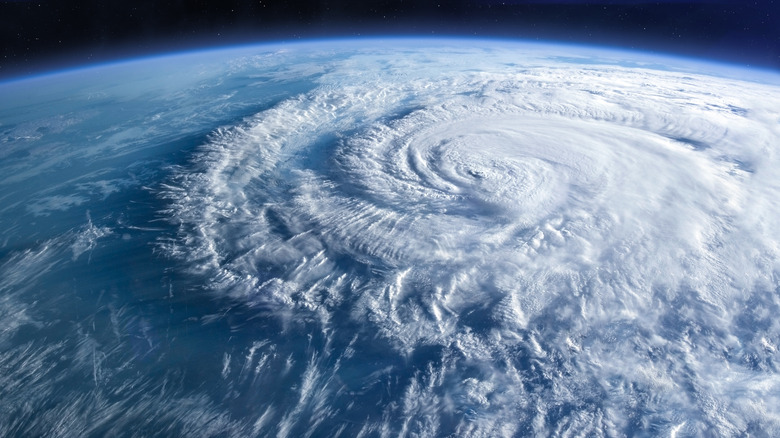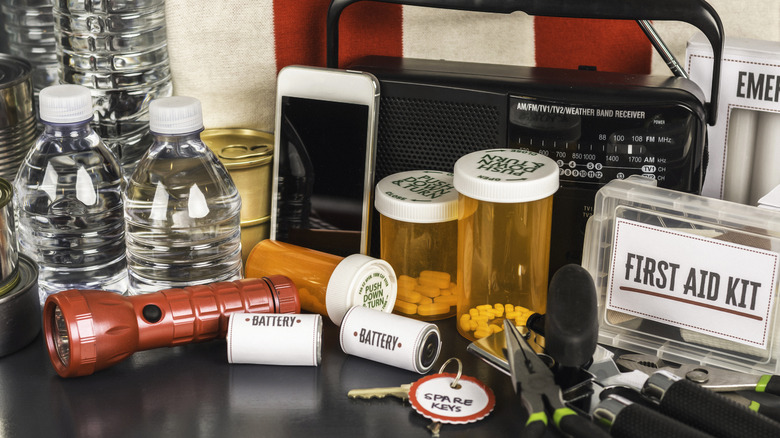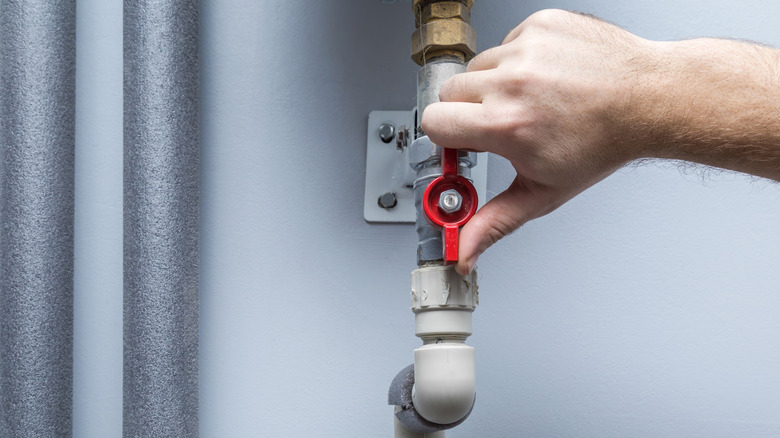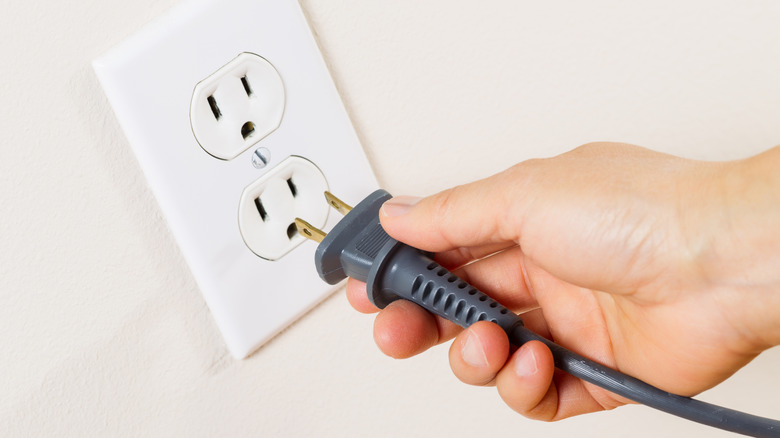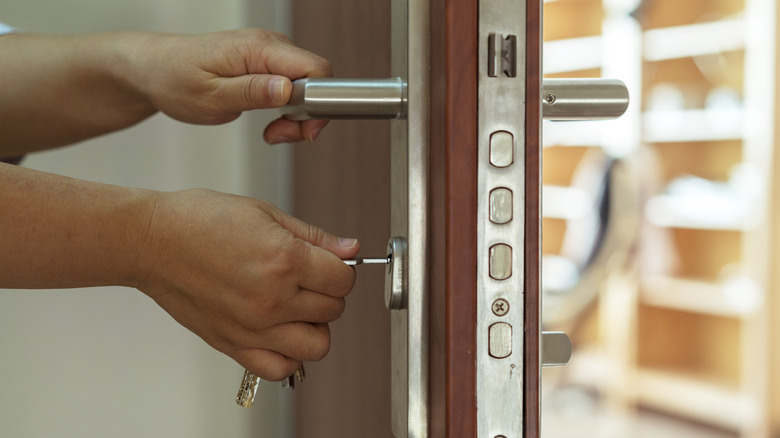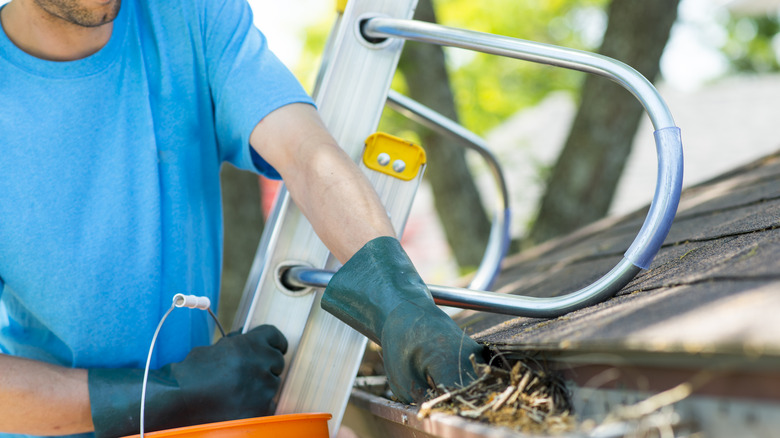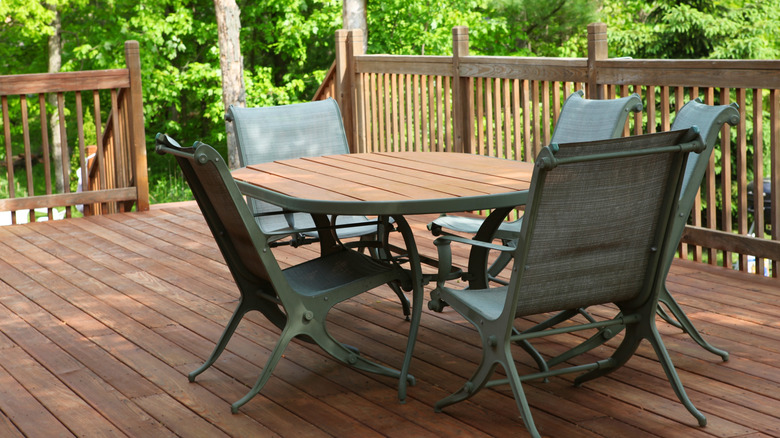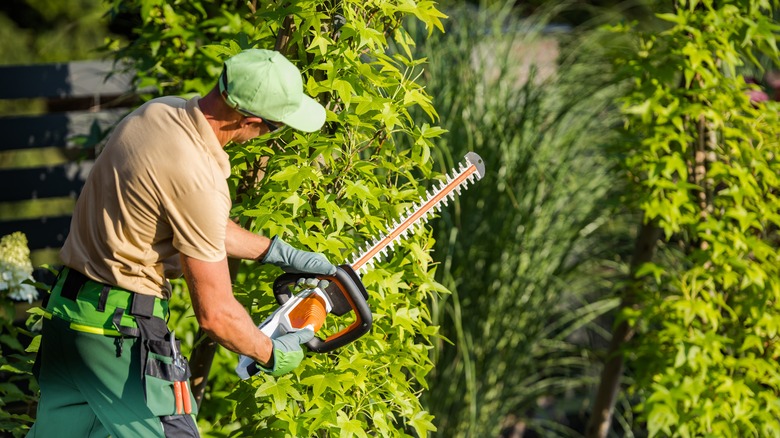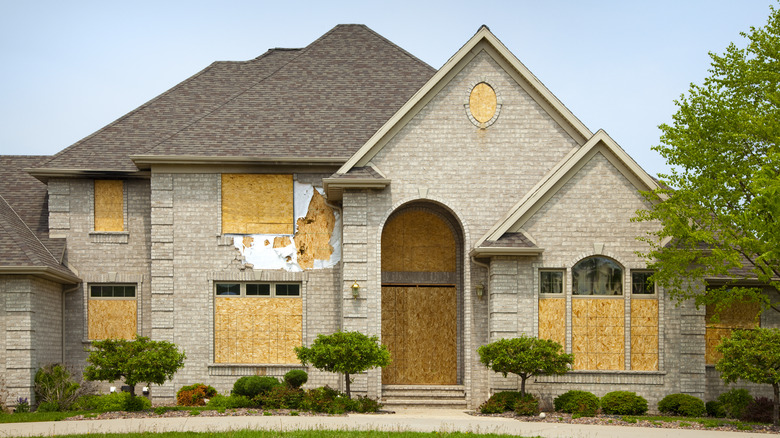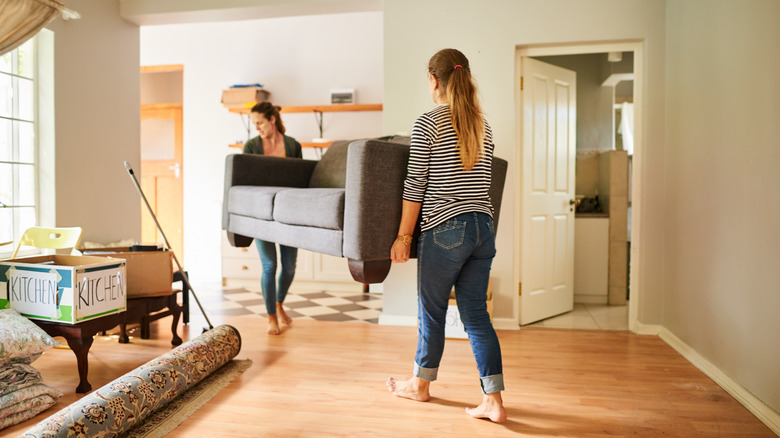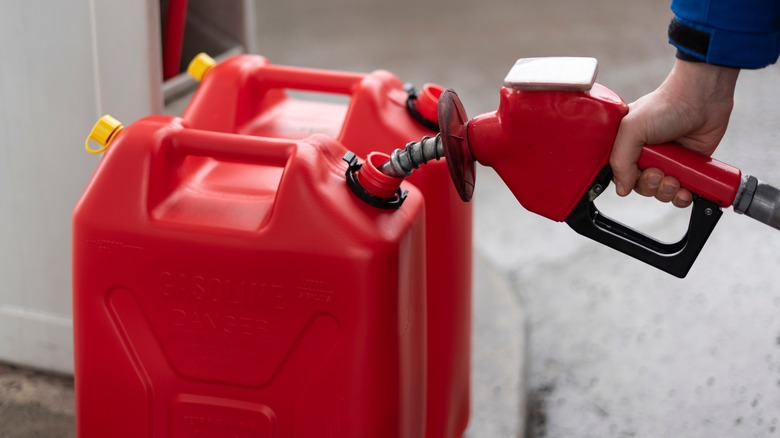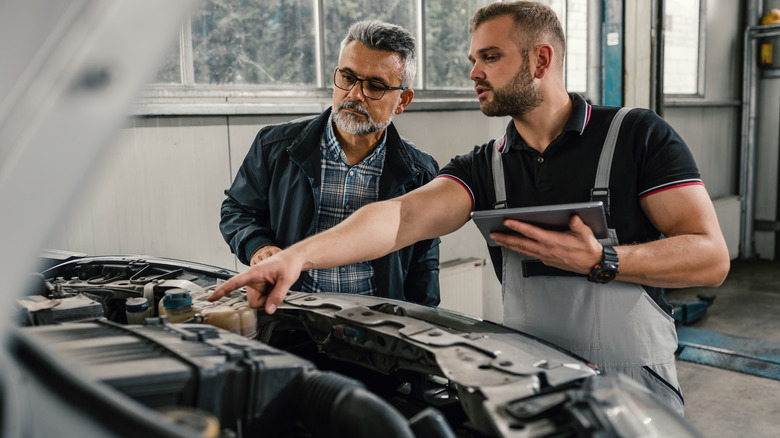Important Steps To Take Around The House Before Evacuating For A Natural Disaster
When you are evacuating from a natural disaster, if it is a time-sensitive emergency, you should just get up and go. However, if you know something is coming for a few days (like a hurricane) or has the potential to be on its way (it's fire season, and you live near the forest), there are things you can do to make your house safer before you go.
Some of these might seem like common sense. After all, doesn't everyone board up their home in the movies? But others dive a little deeper into keeping you and your family safe. Have you ever thought about having your car serviced before an evacuation to ensure it can make the long drive? Do you know how much water to keep in your emergency food supply? Do you know how to turn off the gas in your home so it doesn't explode in your absence? While your physical safety should be your main priority, there are a few easy steps to take to minimize the potential risk to your property, too, like generating an emergency kit or shutting off your utilities. Here's more on what to do well before evacuation, as well as on your way out the door.
Assemble your emergency kit
One of the first things you should do is create a portable emergency kit. This pack should have all the things you might need to survive for a while if you can't go back home right away. There are three main components of an emergency kit. The first is non-perishable foods like beans, meat jerky, and nuts, plus clean drinking water to keep yourself fed and hydrated. These are important because, after a disaster, sustenance might be hard to find or not available at all. The CDC recommends having a least one gallon on hand per person for up to three days.
The second component to include is a first aid kit. Things like painkillers, gauze, antiseptic wipes, band-aids, tweezers, and the like are all essentials. You should also include a flashlight with extra batteries (or a crank handle) so you can see what you are doing without power. The final component is a folder with copies of your most important documents. These are things like passports, driver's licenses, home insurance policies, ongoing prescriptions, and deeds to your house and car. If your home is destroyed, having a copy of these items in a "grab-and-go" pack will save you much frustration during the rebuilding process. You should take the time to prepare your emergency kit well before a disaster is approaching so you don't have to scramble when you're leaving.
Turn off all your utilities
Before you evacuate, make sure you turn off all your utilities. That means gas, electricity, and water. Take the time to locate the "off" switches now so you are not searching during evacuation. First, locate your gas meter. It might be under your house, in a cabinet, or even underground in the backyard. If you cannot find your meter, call your gas provider to discuss its location and best practices for evacuations. If they are unwilling to help, or you do not feel comfortable working with the meter, you can turn off the gas to each appliance individually within your home instead. You can typically do it by hand, although you might need tools for an extra push. This helps prevent fires or explosions should there be a gas leak.
You should do the same for your electricity if it is still on. If there are any damaged power lines or equipment in the area, it could cause sparks or short circuits that could start a fire. Plus, you don't want anyone getting hurt by live wires if they try to go back into the house after the disaster. Just turn the power off at the circuit breaker, which is usually in the garage or laundry room. Last, turn off the water. This is a big one because if any pipes burst or there are leaks during the disaster, your house could end up flooded, causing tons of damage and costing you a fortune.
Unplug all your appliances
If you are evacuating and the power has already gone out, you should unplug your major appliances on your way out the door. You do this to avoid any damage that could happen if there's a power surge when the electricity comes back on after the disaster. Power surges happen when electricity suddenly comes back on and pushes too many volts of power through the wires of your home. This extra power is often way too high for the capacity of things like computers, TVs, and kitchen appliances. Often, they won't catch on fire or explode (although there is a risk), but the wiring will become permanently damaged.
After one incident, your electronics might work for a little while, but one more surge will ruin them forever. Obviously, turning off your refrigerator and freezer might create more work when you arrive home, as you must dispose of the rotten food. The middle ground is to purchase a surge protector, like the Lider Surge Protector. Other surges are available online and at most big box stores like Walmart and The Home Depot. They last three to five years and absorb most of the extra power during a surge.
Lock all your doors and windows
Unfortunately, if you are away from your home for a long period after a natural disaster, you might fall victim to looting. When a natural disaster happens, there can be a lot of chaos and people taking advantage of empty houses. By locking up, you make it harder for anyone to get in without your permission and reduce the risk of theft.
But intruders are not the only things you want to keep out. You also want to make sure debris stays outside, too. While you might always lock your front door, if you have a screen door, you might not typically lock that, too. If you are evacuating, be sure to secure it as high winds could fling it open, damaging your entryway — and even turning it into a flying projectile. The same goes for any of your windows. In a blizzard, hurricane, or particularly bad thunderstorm, windows on hinges can easily blow open in high winds — leaving your home vulnerable to theft and damage from the elements.
Clear out all your gutters
Regularly cleaning out your home's gutters is a crucial step to ensuring things don't go haywire after you evacuate. When a gutter is not blocked, water flows quickly from your roof along the gutters and down the downspout. During natural disasters, there is often plenty of rain. If your gutters are blocked, the water cannot drain properly. When this happens, the water can begin to back up. It might overflow down the sides of your home, seeping into your foundation and causing cracks. It might also seep into your roof, causing shingles to buckle or wood rot to important beams. During a blizzard, any snow that melts can refreeze and cause an ice dam. These slabs cause major roof damage. Even if it's completely dry outside and you are running from a fire — clogged gutters make perfect kindling.
When evacuating from a natural disaster, time is precious, and you need to leave fast. If you've cleaned your gutters well before the disaster, you won't have to worry about water damage or fire problems when you return. You'll avoid expensive repairs or the cleaning headache that comes from growing mold and mildew, which is a nasty problem if the water sits around for too long.
Remove outdoor items that could fly away in high wind
Before you leave, take a quick look around the outside of your property. What do you see that could become a flying projectile in high wind or provide fodder for flames in a bushfire? Things like outdoor furniture, tools, birdhouses, holiday decorations, and even garbage cans can cause a lot of damage if they get picked up and thrown around. They can break windows, wreck cars, and hurt people. But if you bring them inside or tie them down, you can stop them from becoming dangerous.
Even if you think something might be too heavy to cause any harm, like a trampoline, you should still put it in the garage, as it actually doesn't take gale-force winds to lift it. Long before a natural disaster strikes, take a moment to plan out how you might fit the larger items in the available indoor storage space. Take the time to adjust how you store things or clear a few things out so that when the time comes, you can quickly put items away and evacuate to safety.
Trim all your trees and bushes
If a blizzard is predicted, a hurricane is heading your way, or you are coming into fire season, give your plants a trim. This way, when you evacuate, you know you are leaving behind a more fortified home. Trimming trees and bushes around your home is a smart and necessary step to take before a natural disaster hits. This is because bad weather can weaken branches and make trees more likely to fall. Overhanging branches can be dangerous and can cause damage to your home, vehicles, and even people nearby. By removing these dead limbs, you eliminate any potential hazards and prevent them from becoming projectiles that might cause harm.
Not only that but by clearing away the overgrown parts of trees and bushes, you also decrease the chance of wildfires during a disaster. In areas prone to bushfires, excessive vegetation can fuel the flames and make them spread quickly. By trimming, you create a safe space around your home that is less likely to catch fire. This measure can also protect your neighbors' homes and the whole community, as wildfires can easily get out of control.
Board up all glass windows and doors
In addition to locking them to ensure they do not fly open, you should also cover most of the exterior glass features in your home before you evacuate. The main reason for covering glass is to keep out flying debris. When a natural disaster hits, strong winds and flying objects can break windows. But if you use storm shutters or put up boards, you give your windows and glass doors an extra layer of protection. This not only keeps your house safe but also helps prevent anyone from getting hurt should they stay behind. Another helpful reason to cover windows is to stop water from getting inside. If your windows break during a storm, rain or floodwater can seep in and cause a lot of damage to your home. But if you seal up your windows, it is less likely for rain to blow inside and ruin your belongings.
Boarding up your windows doesn't have to be difficult or take a long time, as long as you prepare a little. Measure the dimensions of each of your windows. Go to your local hardware store and purchase plywood sheets instead of individual boards. Cut the boards to be slightly bigger than each window. Then, you can use screws to attach them to the siding outside of your house. Label each board with spray paint so you can install them quickly when in a rush to leave.
Take valuables to higher ground
When there's a risk of flooding, it's a good idea to move furniture and other important things upstairs or onto risers. Water can get into your house fast and can ruin not just furniture but also sentimental things, like photographs and clothing. By lifting these things, you greatly lower the chance of losing them to the flood. This is obviously easier if you live in a two-story house, as it is easiest to carry everything upstairs; however, even if you live in a one-story house, make the most of your attic. You might not be able to save your furniture, but smaller items will be spared.
If you cannot carry furniture upstairs, consider purchasing risers, like the Utopia Adjustable Furniture Risers, to place under it instead. These risers tend to lift tables, beds, and couches by up to eight inches. In a major flood, this won't do much, but if only a little bit of water seeps into your house, your belongings will be safe. They don't tend to be expensive and will only take a few minutes to set up. So you can place them even if you are in a hurry to get out the door.
Store hazardous materials securely
Before you leave, secure any hazardous materials you have on your property. This could be large amounts of chlorine if you have a pool, spare gas for your lawn mower, or even ammonia for cleaning around the house. When deciding what to do with these chemicals, think about the kind of danger on its way. If a blizzard is coming, gasoline stored securely in sealed containers in the garage isn't much of a threat. However, if a wildfire is on the way, leaving these containers behind is a recipe for disaster.
The same could be said if you live in an area prone to hurricanes or tornados. Should these containers be pierced and the gasoline spill, it could easily start a fire. If you store chlorine and ammonia near each other, there is also room for trouble as they create a highly flammable compound, as per the Washington State Department of Health. In most cases, extra fuel should be stored in sealed containers and taken with you — typically strapped to the roof of the car or in the truckbed, so you don't breathe it in on accident. Be sure that any other chemicals you leave behind are sealed tightly and well away from any substances that have negative interactions.
Make sure your car is in working order
Before evacuating your home due to a natural disaster, ensure your car is in good working order. A well-maintained car is essential for a quick and safe escape from harm's way. It is a threat to your safety to discover a flat tire, burned-out tail light, or dead battery when you are all loaded up and ready to go. When fleeing, time is of the essence. If the flood waters are rising and you need to go now, it is unlikely you can wait for a tow truck to come to save you.
Plus, safety on the road is also essential during a disaster evacuation. A well-maintained vehicle is safer to drive. When facing potentially dangerous conditions like heavy traffic, bad weather, or new routes, you want to make sure your car's brakes, tires, lights, and other important parts are working properly. For peace of mind, take your car to be serviced at least once a year. Be sure you have a pair of jumper cables and a spare tire in the car, too. If a dashboard light comes on, don't procrastinate getting it checked out. Your vehicle is your lifeline during evacuation, so you should treat it as such.
